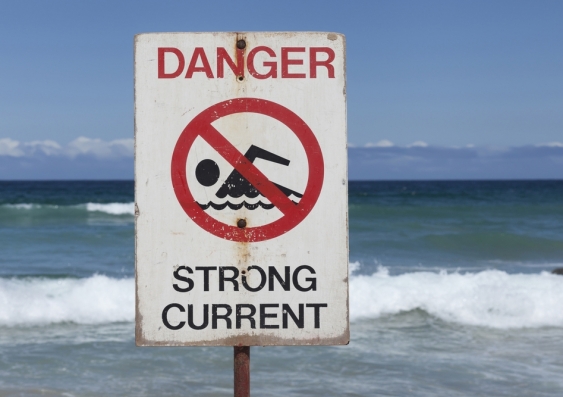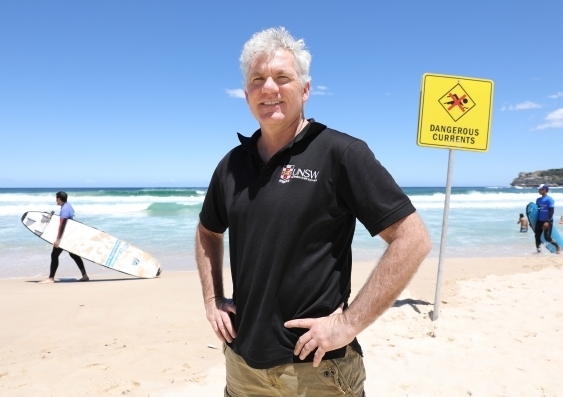Rip currents more deadly than sharks but we don't take them seriously
If we really want to reduce beach drownings, more research needs to be done to determine the most effective ways to educate people about rip currents, writes Rob Brander.
If we really want to reduce beach drownings, more research needs to be done to determine the most effective ways to educate people about rip currents, writes Rob Brander.

OPINION: Last year there was a horrific drowning toll on our beaches over the Christmas holiday period and unfortunately it seems to be happening again.
Last weekend, a 14-year-old boy and a 49-year-old woman drowned in rip currents on NSW beaches. In the past two weeks, an 11-year-old boy from Canberra, a 15-year-old girl visiting from India and a 21-year-old male from Brisbane drowned in rip currents in Australian surf. There have been several other close calls. However, while these stories received some basic media coverage, I've yet to see any stories devoted to why people keep drowning in rips and what we can do to stop these drownings from happening. But they keep happening again and again and again. It just doesn't make any sense.
Can you imagine the response if five people had been killed by sharks over the same period? No doubt the ensuing outcry would result in even more debate and financial resources invested in a problem that typically results in only one human fatality each year in Australia.
Yet every year approximately 20 people, probably more, drown in strong, narrow, seaward flowing rip currents that are ubiquitous on our beaches. The trauma experienced by victims' families and all those involved in these drownings is extreme and no different to fatal shark attacks. Yet millions of dollars have been devoted to the shark problem.
There seems to be a dangerous complacency about the rip current hazard. It almost seems accepted that even though our beaches have red and yellow flags, lifeguards and lifesavers, these drownings, while terrible, are just something that happens. But they shouldn't happen. All rip drownings are avoidable. If you don't get in a rip, you won't drown in one, but most fatalities are due to poor or uninformed decisions about where to go swimming.
Not surprisingly, all rip drownings occur on unpatrolled beaches, or outside patrol times and flagged areas. When someone chooses to enter the ocean under these conditions, the only safety net is their knowledge of surf hazards.
Unfortunately, many Australians and most overseas visitors simply do not have this knowledge and a surprising number don't even think about surf hazards when visiting a beach. In these cases, the only thing keeping them safe is luck, and that's just not good enough.
So, what can be done? We keep ramming home the "always swim between the flags" message. Great. But only 4% of our 11,000 beaches have flags, which often only cover a small section of beach and are mostly seasonal.

Rob Brander wants to arm Australians with the knowledge to avoid rip currents. Photo: UNSW
Many unpatrolled beaches are popular, easily accessible and close to holiday accommodations. Are people staying at these places going to drive 10 kilometres or more to the nearest patrolled beach for a swim? I don't think so. The reality is that people will always swim outside the flags and we cannot keep relying on this message. We have to do more.
Not wasting money on sharks and creating more lifeguard services would certainly help, but even then, lifeguards can't be everywhere all the time. Devoting more financial resources to getting beach safety education into all schools needs to happen. The federal government should make it mandatory that beach safety information is shown on planes and made available in airports to all incoming passengers. It's not hard to do and certainly doesn't cost millions.
However, if we really want to reduce beach drownings, more research needs to be done to determine the most effective and creative ways to motivate a range of demographic groups to make safe choices when going to any beach and to educate them about the rip current hazard.
Just as we always look both ways when crossing the road, our goal should be to make it second nature for people to always spend several minutes looking at the surf and thinking about whether it's safe to swim or not. Those minutes will save lives.
Perhaps there's another way. Many of us do have a good understanding about how waves and rips work and it's not hard to help others who clearly don't. If you see someone, or a group of people, entering the water where they shouldn't, go and talk to them. Tell them that it's not safe and why. Tell them to find a beach with red and yellow flags and swim between them because that's where the lifeguards and lifesavers are. In other words, be a citizen lifeguard without even getting wet.
The recent Senate report on shark mitigation and deterrent measures called for increased funding for shark research and on emerging technologies that may deter attacks. Politicians in the report stated that public safety in the water was "paramount". If that's the case, then it's time to start doing much more about the far more dangerous rip current drowning problem. Or maybe we just focus on the message that sharks live in rips. Yes, that'll probably work.
Rob Brander is Associate Professor in the School of Biological, Earth and Environmental Sciences, UNSW Sydney.
This opinion piece was first published in the Sydney Morning Herald.